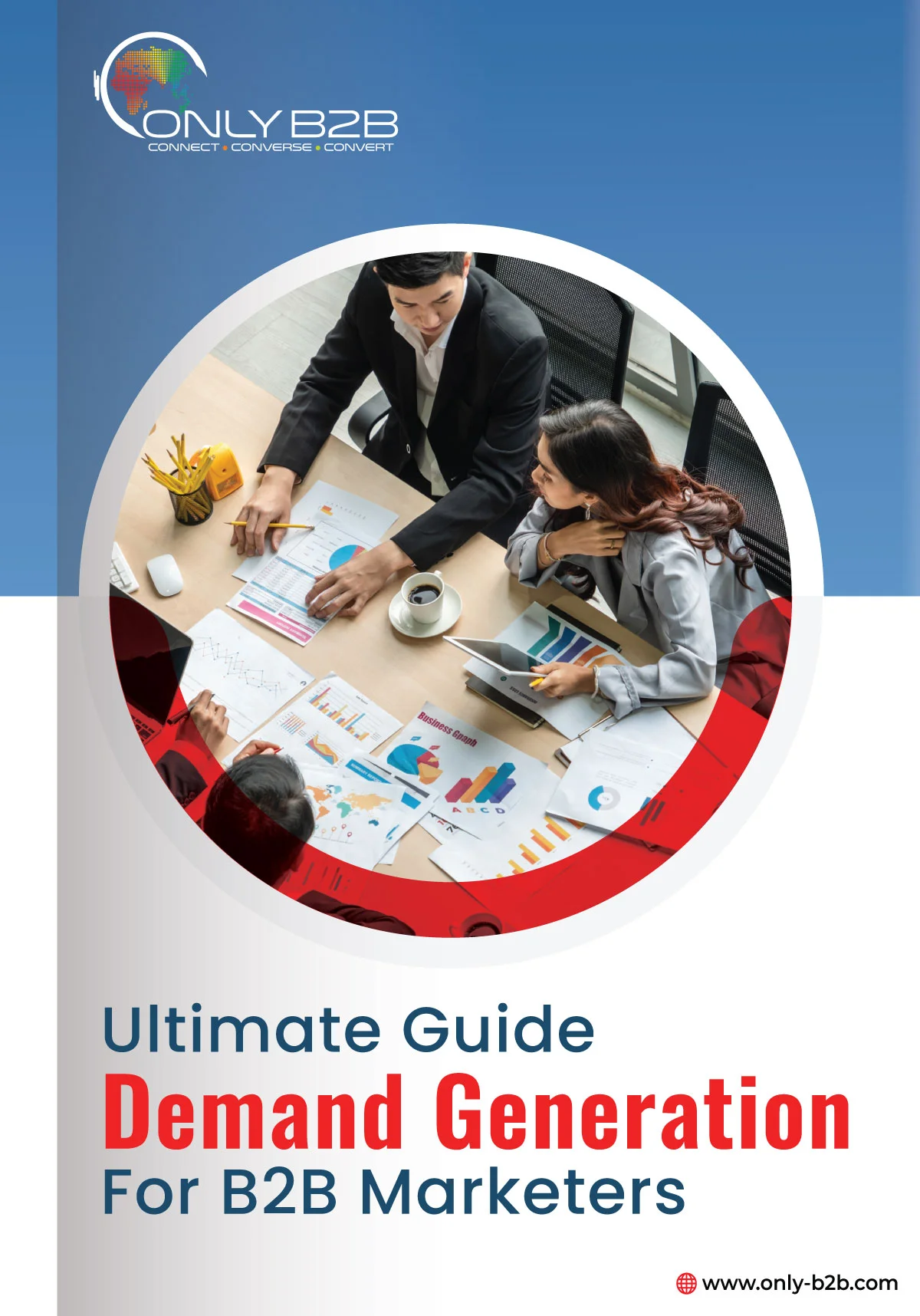
One of the biggest challenges in saturated markets today is generating demand for your business. Big brands make it look so easy. And guess what, IT generation may be a tiny part of the bigger marketing plan, it is crucial to ensure that your demand generation strategies, tactics, and practices work along the sales funnel and result in customer acquisition.
Must Read: 9 demand generation books every marketer must need to know
So, What is Demand Generation?
As the name suggests, demand generation is all about creating a need for your product/service in the minds of your potential buyers.
According to Sproutsocial,
It is a multi-step process that shows your prospects a problem they face, acquaints them with your brand as a potential solution and illustrates the value of choosing you over others.
There are many demand generation strategies and tactics, like email marketing, free tool or resources, webinars, videos, apps, etc, which are known to have impressive ROI Source: leadsmarketer.net While implementing any of these strategies, you need to follow certain rules or best practices which are known to increase customer acquisition and retention rates. Let’s look at them one by one.

1. Remember, You Need Demand Generation
We have met a few clients who thought they didn’t require demand generation strategies.
Ooo! That one mistake always leaves me speechless! Many businesses start off planning their marketing assuming that customers will know and want to buy their products/services. Let me break it to you –
Unless you are selling on Mars and have a monopoly, customers aren’t automatically going to come to you and buy.
Always start with generating demand and do not skip steps
2. Understand the Difference Between Demand Generation and Lead Generation
You may skip over this point thinking you know it but, countless marketers make the mistake of using lead and demand generation interchangeably.
While demand generation is focused on driving awareness for your product/service, lead generation focuses on conversions. You cannot expect conversions if your marketing plan is demand-driving only and vice versa.
Must Read: 15+ Demand Generation Statistics that Every Business Should Know
3. Lead Nurturing, Segmentation and Tailored Communication
There are three absolute essentials to any demand generation plans: Lead nurturing, segmentation and tailored communications. But, for any of this to happen, you will need to start with a buyer persona. Use data to extract relevant information and understand your target audience (their preference, likes, dislikes, pain points, etc). Once you have demand generation aligned with the right persona, the quality of leads will drastically improve. A buyer persona will also help you tailor communications in a way that talks directly to your audience.
Did you know that personalized experience converts 1.5 times better?
We have carried out demand generation for several businesses and we have seen success in narrowing our focus and increasing personalization at every single step. For personalization to work in your favor, you will also need to segment your audience. Narrowing your targets will help you understand their specific situation leading to tailored communications which will help you achieve higher conversions. If you send the same message to all your audience, you will reach no one. All of this put together is the best recipe for lead nurturing. Remember, a poor lead nurturing and demand generation strategies will waste valuable leads.
4. Campaign Analysis and Feedback
Just admit it. You cannot get the perfect demand strategy in your first attempt.
How would you know it? By campaign analysis and feedback.
You need to set up KPIs and performance tools before you start implementing any strategy. Measuring revenue influence against budget investments is important. Other metrics would have a cost per acquisition, lifetime value of customers, time taken to convert, percentage to convert (SQL, MQL, SAL, Buyer), etc. Do not mistake vanity metrics (social clicks, likes, follow, page views) as a measurement for success.
5. Qualifying Leads
If you want to increase customer acquisition with demand generation strategies, you must qualify leads the right way. Incorporate a detailed lead scoring system in your strategy that can help you target the quality leads in your funnel. With lead scoring in place, the sales team can touch upon hottest leads and improve sales.
Must Read: Boost your Engagement with Email Personalization in Your ABM Strategy
6. User friendly UI/UX
Websites are the best way to generate demand. You can use multiple tactics on it: Landing pages, lead magnets, free tools, free resources, etc. It is imperative that you are invested in the designing of your website and ensure that it is attractive, user-friendly, mobile-friendly and at the same time takes up the least amount of resources and loads fast.
7. Social Media Interactions
Social media platforms are the best way to engage with potential buyers today. Be active and comment, like, share, tweet, etc. The classic example is the Xbox. They have assigned a dedicated Twitter account for customer support and 27 people to manage it. An active social media presence can help you generate demand, build credibility and establish you as a thought leader.
8. Branding Consistency
Just ask yourself,
Can your target audience distinguish your graphics, pictures, feature images, logo, in short branding, just by looking at it?
If your answer is no, you are missing out on generating demand and building loyalty.
Check out Melyssagriffin.com
9. Partner or Outsource
This is the mistake we all are guilty of! Partnerships, collaborations with similar businesses and outsourcing to expert demand generation companies/agencies go a long way in managing and creating demand generation that leads to higher customer acquisition.
10. Clarify Goals
Don’t shoot in the dark. You can analyze the performance of a campaign only if you know what you were trying to achieve from it. Without goals, it is difficult to optimize and make decisions on what to change and what to keep. For example, if my goal is 300 sign-ups in a month, how does my campaign work to fulfil it?
11. Have Clean Data
Last but not least, if you want to drive real results from your demand generation campaign, have clean data. Invest in data cleansing and scrubbing because bad data is costing you a lot more than you think.
What has resulted in maximum ROI from your demand generation strategy? Comment below and let us know.

Vikas Bhatt is the Co-Founder of ONLY B2B, a premium B2B lead generation company that specializes in helping businesses achieve their growth objectives through targeted marketing & sales campaigns. With 10+ years of experience in the industry, Vikas has a deep understanding of the challenges faced by businesses today and has developed a unique approach to lead generation that has helped clients across a range of industries around the globe. As a thought leader in the B2B marketing community, ONLY B2B specializes in demand generation, content syndication, database services and more.

